After three flights over three days (from Miami, Florida via Istanbul, Türkiye and Kuala Lumpur, Malaysia) we arrived in Chiang Mai, Thailand.
We breezed through passport control and followed the signs to baggage claim. After picking up our two suitcases we walked through customs and headed for the exit. From Google Maps we knew that the Grab pickup point was at the north end of the terminal, so we walked that direction.
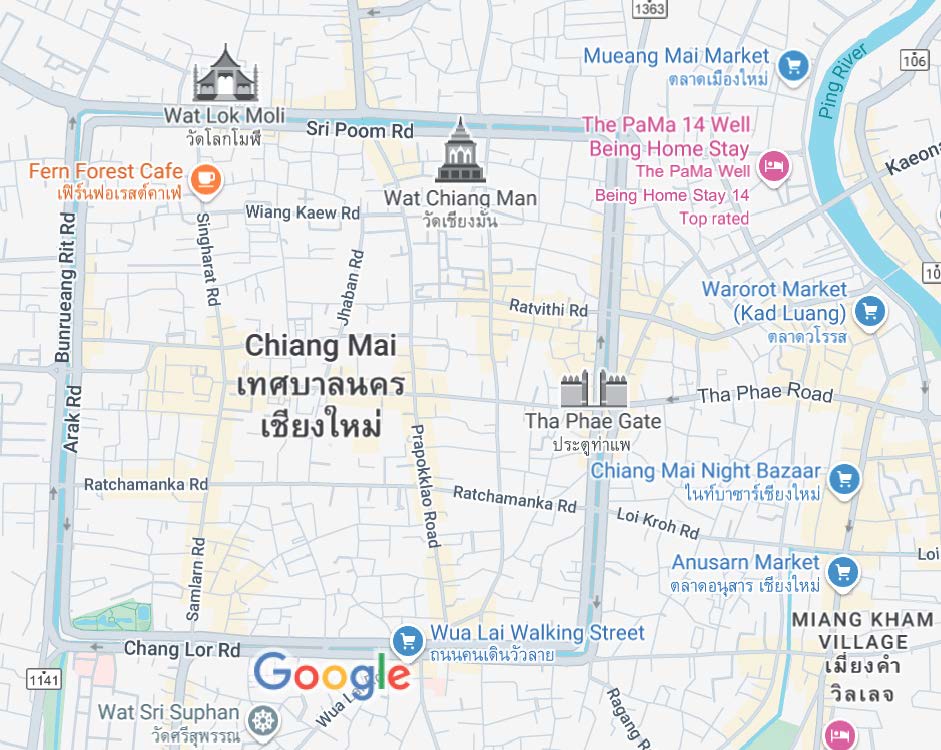
Grab is basically the Uber of southeast Asia. The cost is about the same as a taxi, but Grab has two significant benefits. First, you set your pickup and arrival addresses in the app, so there is zero communication barrier. Second, you pay in the app with a credit card. Local currency is not necessary.
As we approached the end of the terminal, signs directed passengers to the Grab pickup point, which is nothing more than a few benches under a slanted roof, much like a bus stop. We ordered a Grab as we walked out of the terminal. Our driver was waiting for us when we reached the pickup point about two minutes later. Very smooth.
Our accommodations in Chiang Mai are at the Astra, a large condominium complex that is basically nothing but Airbnbs rented out to western tourists. On ground level there is a coffee shop, nail salon, and a travel agency selling day trips to various places just outside Chiang Mai. On the roof there is a gym and small pool. This place was built to cater to westerners.
The Astra is located on the edge of a somewhat touristy area. We are less than a 10 minute walk from two 7-Elevens, a Big C grocery store, Pizza Hut, Taco Bell, KFC, McDonald’s, a Hard Rock Café, Starbucks, several Thai restaurants, an American diner, a few money exchange business, and a couple of local markets.
All things considered, we are in a good location, about a 20 minute walk to the center of town.
Markets range from small local venues with vendors selling only authentic Thai dishes to large plazas with numerous food vendors selling a variety of foods (including pizzas, tacos, and scorpions).
At local markets two people can get two decent meals, with drinks (not beer), for between 250 ฿ and 400 ฿ a day (฿ is Thai Baht; roughly 33 ฿ equals $1 at the current exchange rate; so about $8 to $12). The vendor with the most locals in line is usually the best.
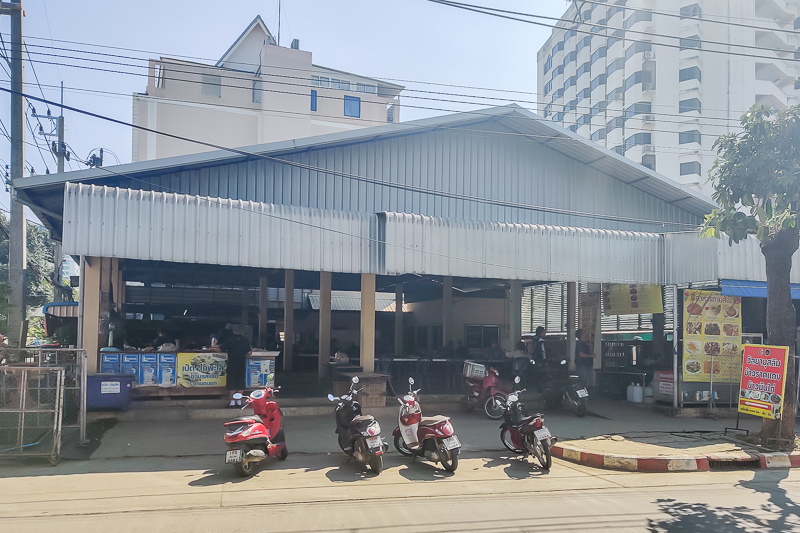
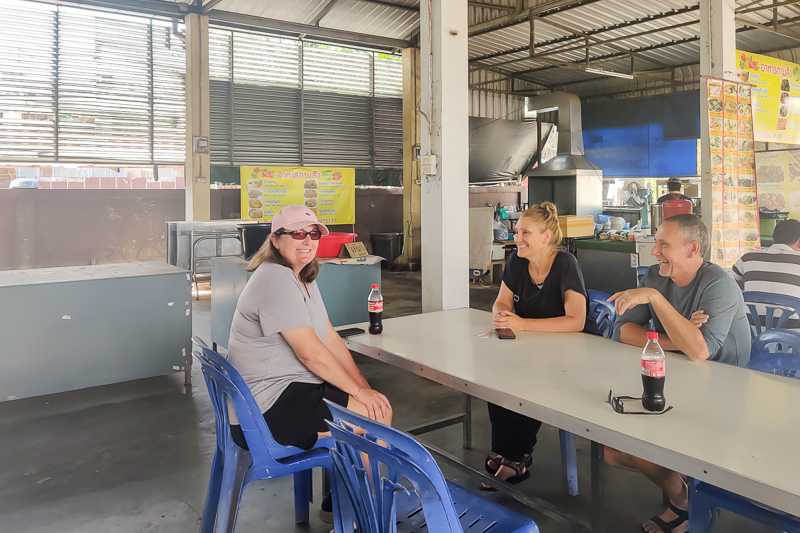
At these prices, it costs about the same, if not less, to eat out at the local markets instead of buying groceries and eating in.
Our favorite local daytime market has stained and dirty concrete floors, metal tables, broken plastic chairs (often stacked in twos for strength), quite a few pigeons (watch where you sit in relation to the pigeons above), and two or three food vendors … who have immaculately clean kitchen set ups.
At nicer markets, or restaurants, it is more like 600 ฿ to 800 ฿ per day for two people to eat (ballpark $18 to $24), which is still pretty damn good but a lot more than we want to pay. For the most part we alternate going to local markets, the nicer markets, and restaurants.
Regardless of where you eat, plan on paying in cash. With the exception of grocery stores and 7-Elevens, cash is king. And a lot of places won’t accept the 1,000 ฿ notes that ATMs spit out. It’s not uncommon to use a 1,000 ฿ note to pay for a 22 ฿ Coke at a grocery store just to get change.
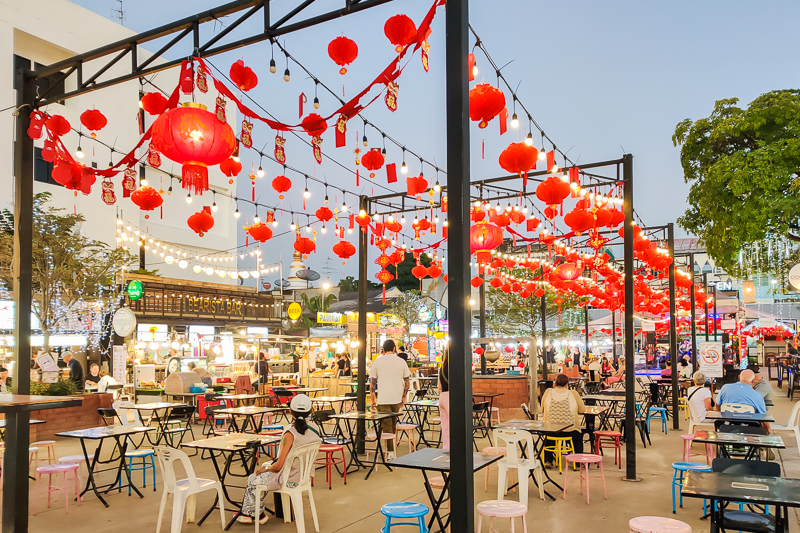
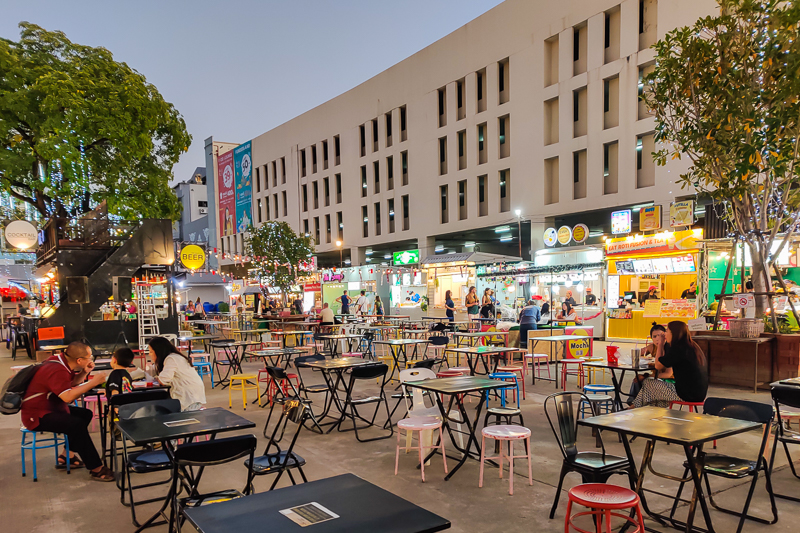
At grocery stores we only buy waters, Gatorades, Cokes, beer, apples, and chips. Basically drinks and snack foods. Much to our dismay, beer costs about what it does in the United States.
Outside of town, up high on Doi Suthep mountain, is perhaps the most well-known and frequently visited temple in Chiang Mai, Wat Phra That Doi Suthep. It is absolutely overrun by tourists at peak times.
For travelers there are several ways to get to Wat Phra That: tour group; hired car; red truck; or, by hiking. Tour groups are not for us, though we saw plenty of tour busses and vans picking up and dropping off tourists at the temple complex.
A hired car through Grab (or Bolt, the other car hire option) is possible, but expect to haggle with the driver. This temple is so far from town that drivers typically demand an additional fee above the quoted price because of the length of time and/or the extra gas used to get up and down the mountain.
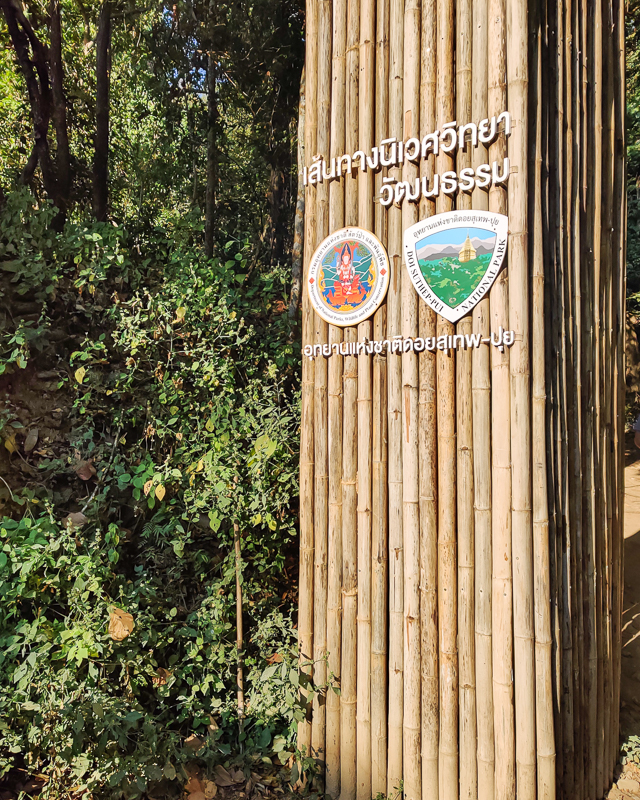
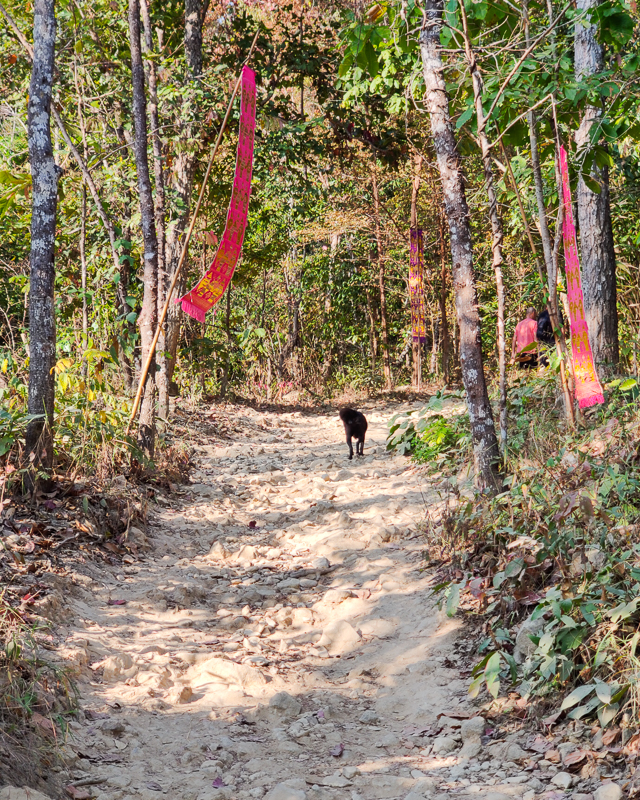

Red trucks are found all around Chiang Mai and will gladly take you where you want to go. Just make sure the driver is going in your direction and hop in the back. In the old city a ride across town is typically 30 ฿ per person (about $1). To go up Doi Suthep, count on at least 100 ฿ per person (ballpark $3) each way.
Lastly there is a hiking trail, The Monk’s Trail, which leads first to Wat Phra Lat, a small temple complex in the woods. From there you can continue hiking up the trail to Wat Phra That, or catch a ride on a red truck. We chose to hike and ride.
One morning we hired a car through Bolt to take us to the trailhead. The driver said that he did not want to drive up the mountain unless we paid extra because of the additional time and gas involved. We thought the driver meant that he did not want to drive us to Wat Phra Lat. We assured him that we were walking to the temple and only needed to get to the trailhead.
Naturally the driver dropped us off at a 7-Eleven about half a mile away from the trailhead, at the bottom of a steep hill. Oh well. Our intended hike just got longer as we first had a 15 minute walk up the road.
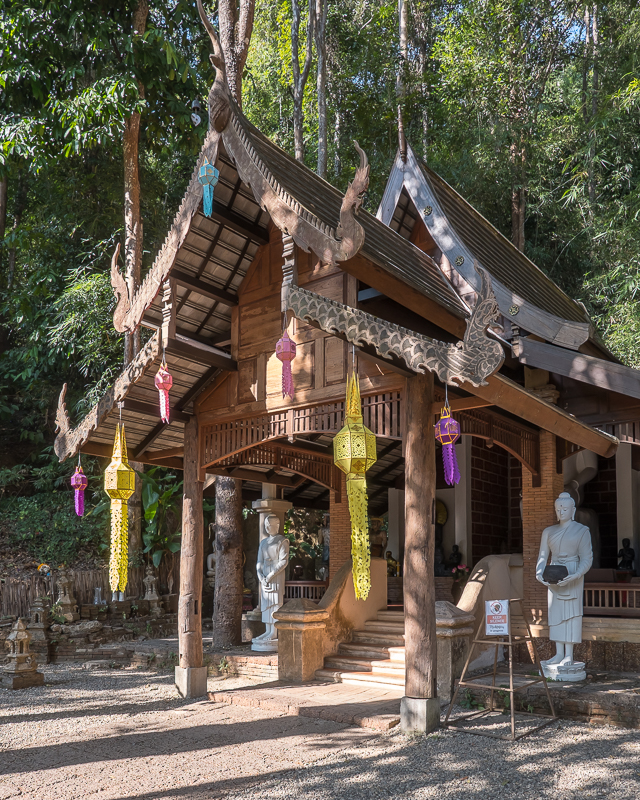
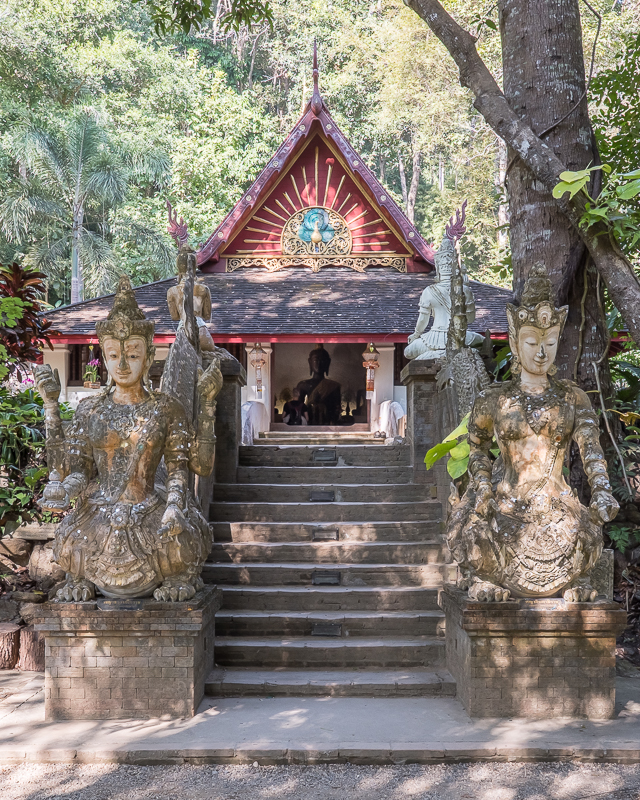

The Monk’s Trail to Wat Phra Lat is an easy 30 minutes or so in the shade. The trail was steep in a few sections, but overall was pretty easy. It followed a stream for much of the way.
Wat Phra Lat was not crowded at all. We probably spent half an hour walking around the small complex. Afterwards we got a red truck to drive us the rest of the way up to Wat Phra That Doi Suthep for 75 ฿ each (a little over $2).
Our other option was to continue hiking. However, we were told that the next part of the trail went largely straight uphill, was exceptionally steep with few switchbacks, in the sun, and would take well over an hour. No thanks.
Exiting the red truck we found ourselves just outside the Wat Phra That complex in a mass of cars, busses, people, and vendors. It was 11:00 AM on a Friday … peak tourist hour. Ugh. We grabbed some street food and sat for a bit in the shade before climbing the 300 plus steps to the temple. At the top foreign visitors are directed to pay 30 ฿ before entering.
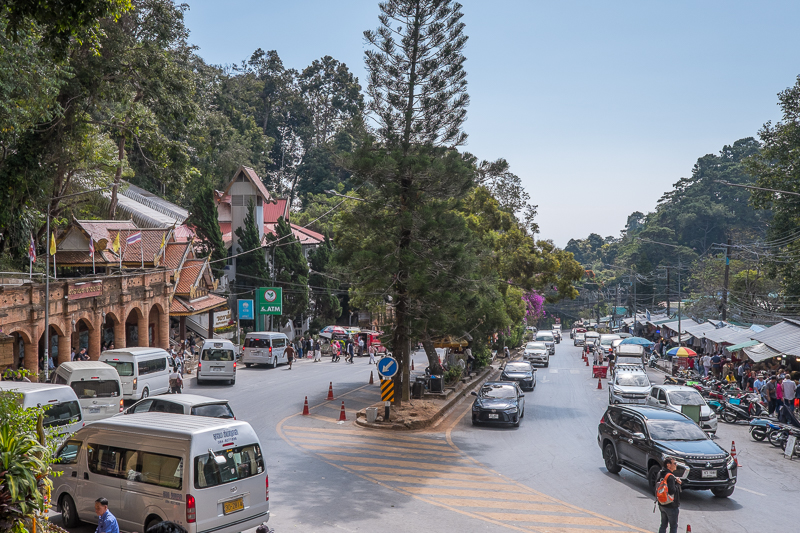
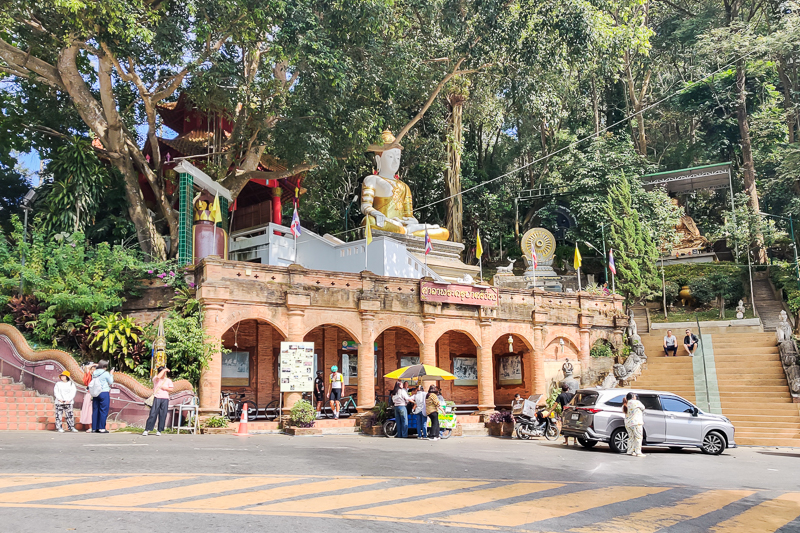

We joined the crowd and walked around before entering the main temple. First up are several observation areas looking towards Chiang Mai. The views on a clear day must be incredible. On a hazy day in January, not so much.
The main temple complex consists of several buildings, notably a Ubosot (ordination hall, most sacred area), Wihan (assembly hall), Chedi (also known as a stupa or pagoda, often a tall bell shaped golden tower), several other smaller buildings, many Buddha statutes, and tons of tourists jostling for position. Not exactly peaceful.
After a short visit, we headed back down the 300 plus stairs and out. It was way too crowded to stay any longer. In hindsight, we should have skipped the hike and visited Wat Phra That at 6:30 AM. Instead we violated all rules of common sense and arrived at peak tour group hour.
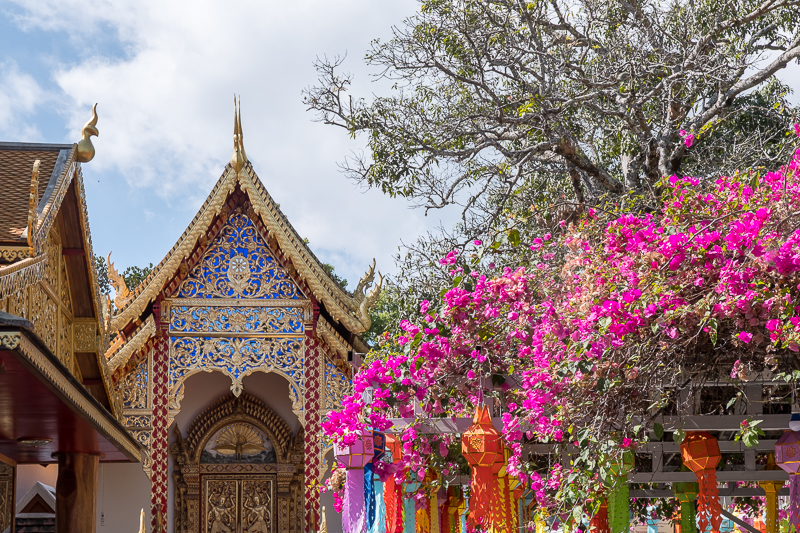


To get back to town our options were to catch a ride on a red truck for 100 ฿ each (about $3) or hire a car. A twenty-minute ride on a bench in the bed of a pickup truck down a winding mountain road did not excite us, so we hired a car through Bolt. The driver insisted on being paid a 100 ฿ premium, and even demanded a photo of the pickup location, before he would drive up the mountain to get us.
We didn’t blame the driver for his precaution. Wat Phra That is a long way outside the city and nowhere near any other potential customers. It also helped that we were in a group of four, making it slightly cheaper to hire a car (roughly $2.50 per person in the car, instead of $3 per person in a truck), even with the premium, than to hop in a red truck.
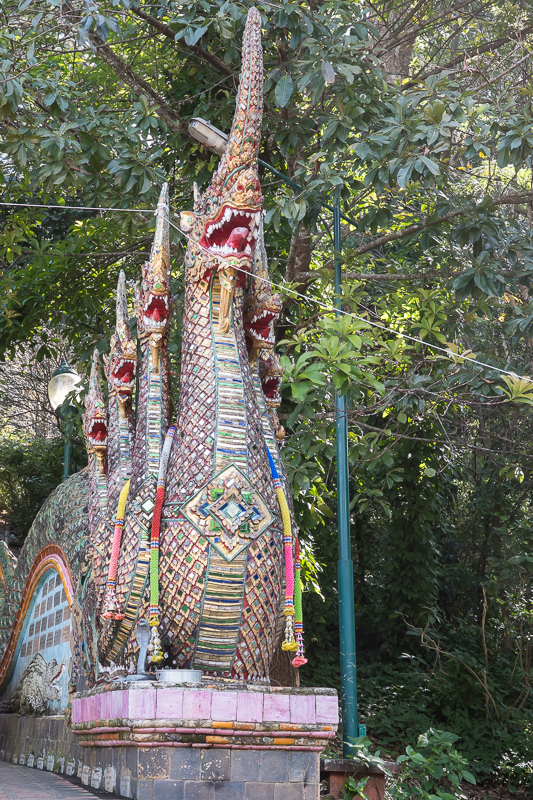

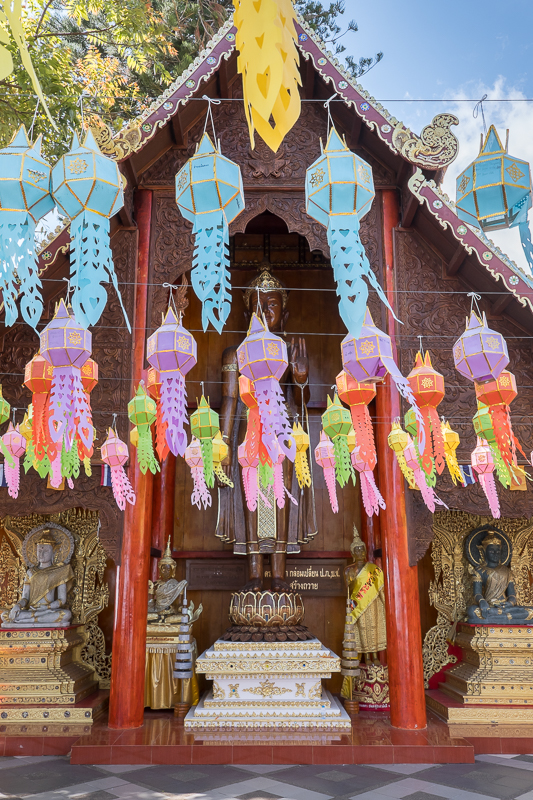
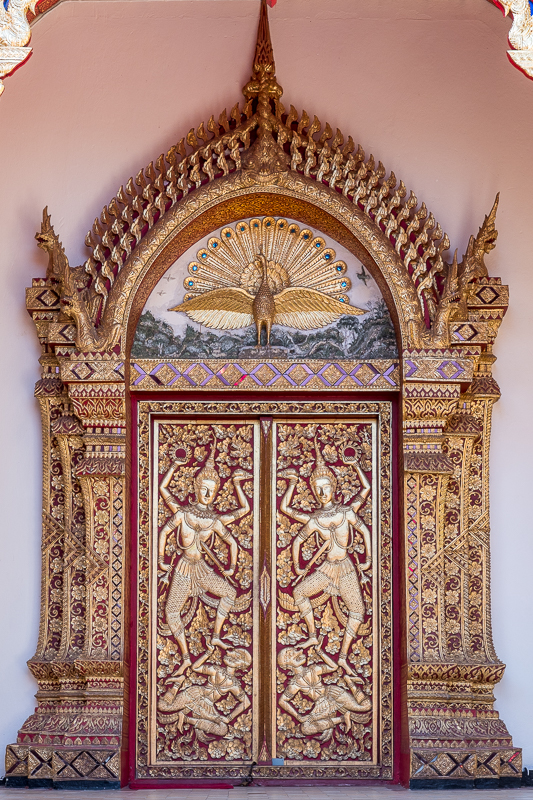


As is now our custom in a new country, on our first day we bought several cans of local beers to taste test our options. Only three Thai beers – Chang, Leo, and Singha – are sold at the local stores. By a slim margin, Singha took the crown.

Really they cost and taste about the same. Beer tasting isn’t nearly as interesting when you only have three real contenders.
Garrett and Stephanie
If you have not already done so, read our other posts about Chiang Mai:
Elephant Nature Park, Chiang Mai, Thailand (January, 2025, Part II). Elephants, and dogs that bite.
Chiang Mai, Thailand (January, 2025, Part III). Wats, wats, and more wats.
For additional posts about Thailand, or elsewhere in the world, check out our Travel Blog. It contains collected links to all of our travel posts.
Want to subscribe (or unsubscribe) for email notification of new blog posts? It is only two to three emails a month. Send your name and email address to slowtravelchronicles@gmail.com, and note subscribe (or unsubscribe) in the subject line. All email addresses will be kept confidential and not sold to any third-party. You won’t get any marketing junk or sales pitches from us.
